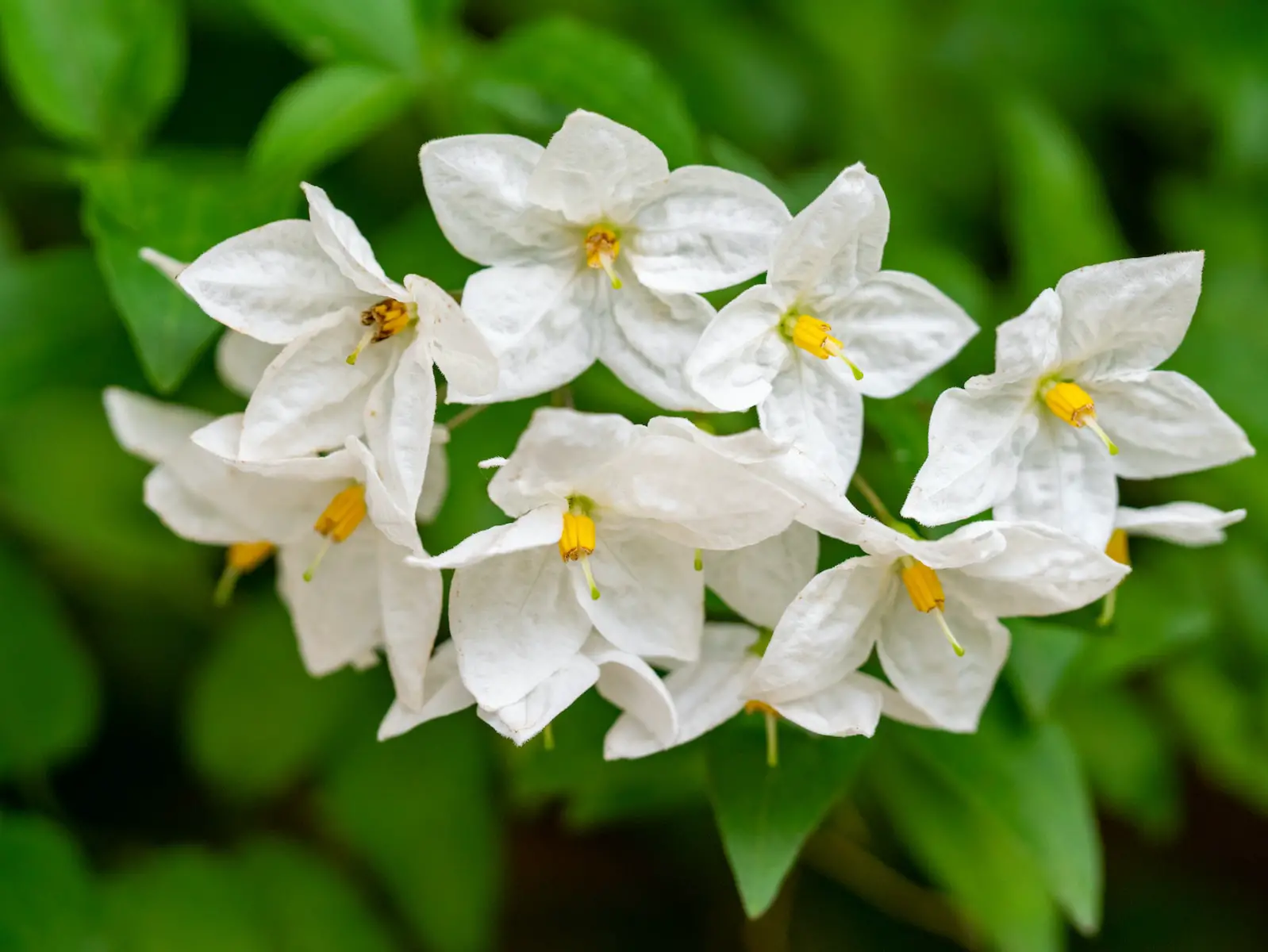Jasmine is synonymous with fragrance. Known for its sweet, intoxicating scent, this beautiful flowering plant adds elegance and charm to gardens, patios, and indoor spaces alike. Its delicate white or yellow blossoms and lush green foliage make it a visually pleasing plant, beloved by many gardeners.
Native to the tropical and subtropical regions of Eurasia, Australasia, and Oceania, Jasmine is part of the Oleaceae family. There are over 200 species of Jasmine, each with unique characteristics, but most are renowned for their enchanting fragrance. Whether grown outdoors in a garden or indoors in a pot, Jasmine’s attractive appearance and delightful aroma make it a favored choice among plant enthusiasts.
Jasmine isn’t only treasured for its beauty and fragrance; it has cultural and medicinal significance too. In some cultures, Jasmine flowers symbolize love, purity, and grace. They are often used in ceremonial rituals and as natural remedies for various ailments. Now, let’s explore the detailed attributes and care guide for this alluring plant.
| Attribute | Details |
|---|---|
| Common Names | Jasmine, Common Jasmine, Poet’s Jasmine |
| Botanical Name | Jasminum officinale |
| Family | Oleaceae |
| Plant Type | Evergreen Shrub or Vine |
| Mature Size | Up to 15 feet in length or height |
| Sun Exposure | Full Sun to Partial Shade |
| Soil Type | Well-drained, Moderately Fertile Soil |
| Hardiness Zones | 7-10 |
| Native Area | Eurasia, Australasia, and Oceania |
Jasmine Care
Jasmine is a fairly easy plant to care for, provided its basic needs are met. These include proper sunlight, water, soil conditions, and occasional pruning and fertilizing. When these needs are satisfied, Jasmine will reward you with vibrant growth and abundant flowering.
Growing Jasmine indoors requires more attention to factors like light, humidity, and temperature, but the effort is well worth it. Whether inside or outside, Jasmine’s aromatic blooms create a delightful ambiance that enhances any space.
Light Requirement for Jasmine
Jasmine thrives in full sun to partial shade. Providing at least four to six hours of sunlight daily encourages healthy growth and flowering. Indoors, placing it near a south-facing window with filtered light works well.
Soil Requirements for Jasmine
Plant Jasmine in well-drained, moderately fertile soil that retains some moisture. A balanced soil with a pH level of around 6.0 to 7.5 is ideal for this plant.
Water Requirements for Jasmine
Water Jasmine regularly, keeping the soil consistently moist but not soggy. Reduce watering during the winter when the plant is not actively growing.
Temperature and Humidity
Jasmine prefers warm temperatures ranging from 60-75°F (15-24°C). It also appreciates higher humidity, especially when grown indoors. Mist the leaves or use a humidity tray to maintain moisture levels.
Fertilizer
Feed Jasmine with a balanced, water-soluble fertilizer every two to four weeks during the growing season (spring through early fall).
Pruning Jasmine
Pruning helps shape the plant and encourages more flowers. Trim back the Jasmine after flowering, removing dead or weak growth.
Propagating Jasmine
Jasmine can be propagated through stem cuttings or layering. Take healthy cuttings in late spring or early summer, and plant them in moist soil.
How To Grow Jasmine From Seed
Growing Jasmine from seed is a lengthy process and is typically done by experienced gardeners. Plant the seeds in a seed-starting mix and maintain a warm temperature until they germinate.
Common Pests & Plant Diseases
Aphids
Aphids can be controlled with insecticidal soap or neem oil.
Powdery Mildew
This can be treated with proper airflow and fungicides.
Common Problems With Jasmine
Failure to Bloom
This is often due to insufficient light or incorrect pruning practices.
Yellow Leaves
Yellowing leaves may indicate overwatering or a nutrient deficiency.
Pro Tips
- Regularly deadhead spent flowers to encourage more blooming.
- Provide a support structure if you’re growing Jasmine as a climbing vine.
- Be cautious with watering; overwatering can lead to root rot.
- Jasmine’s fragrance intensifies at night, so consider placing it near windows or outdoor seating areas to enjoy the scent.




